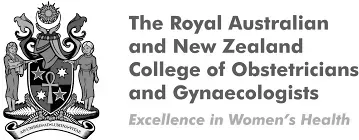Laparoscopic Surgery
What is Laparoscopy Surgery?
Laparoscopy, also known as minimally invasive surgery or keyhole surgery, is a surgical procedure used to examine the organs inside the abdomen. It’s a low-risk, minimally invasive method involving small incisions and a laparoscope—a long, thin tube with a high-intensity light and a high-resolution camera at the front. The laparoscope is inserted through an incision in the abdominal wall, and as it moves along, the camera sends images to a video monitor. This allows the surgeon to view the inside of the abdomen and pelvis without making large incisions.
Who is Suitable for Laparoscopy?
Laparoscopy may be suitable for individuals with certain conditions that can be diagnosed or treated by examining the organs inside the abdomen. These conditions can include the following:
- Endometriosis
- Fibroids
- Infertility
- Ovarian cysts
- Ectopic pregnancy
- Pelvic inflammatory disease
- Certain types of cancer
However, only some are good candidates for laparoscopy. Factors that may make a person unsuitable for the procedure include:
- Obesity
- Previous abdominal surgery
- Advanced pregnancy
- Abdominal infection
- Blood clotting disorders
Consult Dr Alyousif to determine if laparoscopy is appropriate for your specific condition. She will evaluate your medical history, perform a physical examination, and order tests such as blood work and imaging studies to determine if you are a good candidate for laparoscopy.
Benefits of Laparoscopy
Laparoscopy offers several benefits compared to traditional open surgery. These benefits include:
- Less invasive: Laparoscopy uses small incisions, which means less trauma to the body, less pain, and a faster recovery time.
- Reduced blood loss: Laparoscopy typically results in less blood loss than open surgery.
- Shorter hospital stay: Laparoscopic surgery often involves a quick recovery, which means the patient can go home the same day or the day after surgery.
- Reduced risk of infection: The smaller incisions in laparoscopy reduce the risk of infection.
- Reduced scarring: The small incisions in laparoscopy result in less noticeable scarring.
- Faster recovery: Because of the smaller incisions and less invasive procedures, patients typically recover faster after laparoscopy than open surgery.
- Better visualisation: The laparoscope allows the surgeon to see inside the abdomen with greater detail and precision, leading to better results.
- Better diagnostic abilities: Laparoscopy can diagnose many conditions that may not be visible through other diagnostic methods.
Types of Laparoscopy
There are several types of laparoscopy, each with a specific purpose and use. Some common types of laparoscopy include:
- Diagnostic laparoscopy: This type of laparoscopy is used to diagnose conditions such as endometriosis, fibroids, and ovarian cysts.
- Operative laparoscopy: This type of laparoscopy is used to perform surgical procedures such as removing cysts, ovaries, fallopian tubes, or uterus and to treat endometriosis and tubal ligation.
- Robotic laparoscopy: This type of laparoscopy is performed with the assistance of a robotic surgical system. It remains to be seen whether this newer approach confers any additional benefit to the patient compared to routine laparoscopy and may incur higher costs.
Laparoscopy vs Laparotomy
Laparotomy is a surgical procedure that involves a large incision in the abdomen to facilitate a procedure. Laparoscopy is a minimally invasive procedure, sometimes called keyhole surgery, and it uses small incisions.
Alternative Options to Laparoscopy
While laparoscopy is beneficial for many patients, some may need or prefer alternative diagnostic or surgical options, depending on their specific circumstances:
- Open Surgery: Traditional surgery with larger incisions may be necessary for more complex or extensive procedures requiring direct organ access.
- Non-Surgical Imaging Tests: Ultrasound, MRI, or CT scans can provide diagnostic information without invasive procedures.
- Hysteroscopy: For certain gynaecological issues, hysteroscopy allows for the examination of the uterus via the vaginal canal.
- Endoscopy: An endoscope can examine the digestive tract without abdominal incisions for gastrointestinal issues.
- Medical Management: Some conditions can be managed or treated with medications and lifestyle changes, avoiding the need for surgery.
What to Do Before a Laparoscopic Procedure?
Before a laparoscopic procedure, you will typically go through the following steps:
- A pre-operative consultation with your surgeon will be scheduled. During this consultation, the procedure will be explained in detail, and any questions you may have will be answered.
- Your surgeon will review your medical history and perform a physical examination.
- You may need to undergo investigations such as blood tests, imaging studies, and an electrocardiogram (ECG) to ensure you are healthy enough for the surgery.
- Your surgical team will provide instructions on preparing for the surgery, such as fasting for a certain period before the procedure and arranging for someone to take you home after the surgery.
Laparoscopic Procedure
A laparoscopy is performed in a day-stay unit under general anaesthesia in the operating theatre. During the procedure, Dr Alyousif will perform the following:
- You will be given general anaesthesia (or other anaesthesia) to put you to sleep during the procedure.
- Small incisions will be made in the abdomen, and a laparoscope (a thin, lighted tube with a camera on end) will be inserted through one of the incisions.
- Other instruments will be inserted through the other incisions to perform the procedure.
- The procedure will be performed while you are under anaesthesia, and you will not know what is happening.
- The laparoscope will transmit images of the inside of the abdomen to a monitor, allowing the surgeon to see the inside with greater detail and precision.
- Once the procedure is completed, the incisions will be closed with sutures.
What To Expect After A Laparoscopic Procedure?
- You will be taken to a recovery room, where you will be monitored until you wake up from the anaesthesia.
- You may experience discomfort and pain in the incision area, which can be managed with pain medication.
- You may also experience pain at the shoulder tip area from referred pain.
- You will be given instructions on caring for the incision area and managing pain or discomfort.
- Dr Alyousif will provide instructions on when to return to normal activities and when to schedule a follow-up appointment.
- Depending on the procedure, you may have to stay overnight in the hospital or be able to go home the same day.
The steps may vary depending on the condition being treated, the type of laparoscopy, and the individual's overall health. Your surgeon can provide more detailed information about the steps involved in your laparoscopy surgery.
Problems During the Recovery Period
You should seek immediate medical attention by going to the emergency department of your closest hospital or contacting me if you experience any of the below-mentioned conditions:
- Fever
- Offensive vaginal discharge or heavy bleeding
- Severe nausea or vomiting
- Inability to empty your bladder or bowels
- Severe pain
During the Postoperative Period
During the Postoperative Period, you:
- should avoid heavy activities or exercise until your post-operative review may return to half-intensity activities after two weeks and
- return to normal intensity activities after four weeks
Post Operative Expectations
It is common to experience right shoulder tip and upper chest pain for about 24 hours after a laparoscopy. This is referred to as pain from the gas trapped under the diaphragm. It is common to experience a bloated sensation and sharp, shooting pains for about three days. Most women will feel tired for about five days. You can expect to return to work after about seven days.
Dr Alyousif will talk with you after the laparoscopy to briefly discuss everything and ensure you are okay. Dr Alyousif will review you at your post-operative appointment to check your progress and discuss the recent procedure in more detail - including laparoscopic pictures and pathology results.
Post Operative Care
The best advice is to take it easy for seven days. Avoid strenuous activity and exercise. Four cuts (from the small keyhole incisions) will be covered with waterproof dressings.
You can have a shower or a bath. The hospital will give you extra dressings so that you can change them if necessary.
Laparoscopy Prognosis
The prognosis after laparoscopy is generally very favourable compared to traditional open surgery. The recovery time is usually shorter; patients often experience less postoperative pain and fewer complications. Laparoscopy's success rate is high for diagnostic and therapeutic procedures, making it a preferred choice for many surgical interventions.
Most patients can return to their normal activities within a few days to a week, depending on the procedure's complexity and overall health. Full recovery might take a few weeks, especially for more extensive surgeries. Regular follow-up appointments ensure that the patient is healing properly and that complications are promptly addressed.
Laparoscopic Surgery Risks
As with any surgical procedure, laparoscopic surgery is also associated with certain risks and complications, and they include:
- Infection
- Bleeding
- Injury to surrounding organs
- Blood clots
- Adverse reactions to anaesthesia
- In rare cases, there may be a need for a conversion to open surgery due to unexpected findings during the procedure.
Discuss the potential risks and benefits of the procedure with Dr Alyousif, and follow the post-operative instructions to help ensure a successful recovery.
What if Laparoscopy Surgery is Delayed?
Delaying a laparoscopy surgery may be necessary for certain situations, such as if the patient is not healthy enough or if other medical conditions must be addressed first. However, in some cases, delaying a laparoscopy surgery can adversely affect the patient's health and outcome.
If a laparoscopy surgery is delayed, the underlying condition being treated may worsen, leading to more extensive surgery and a longer recovery time. Also, delaying the surgery may increase the risk of complications and make it more challenging to achieve a positive outcome.
Cost of Laparoscopy Surgery
The costs can be significantly reduced for those with private health insurance, but there are still out-of-pocket expenses. These expenses can include surgeon’s fees, anaesthetist’s fees, and hospital charges. The total cost can range from AUD 2,000 to AUD 5,000 or more, depending on the specifics of the procedure.
Without private health insurance, patients might have to pay the full cost, which can be quite high. Consulting with the healthcare provider and the insurance company beforehand can help estimate the costs.



